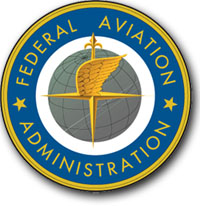

The Storch SLSA ran into the manufacturer definition problem head-on. Read the earlier post.

Manufacturer organization LAMA recently sent a letter detailing how industry should prepare for a FAA visit.

CubCrafters received a FAA “prototype audit” that reportedly went well.
Today, FAA issued its anticipated notice of policy that clarifies who can qualify as a manufacturer. You may wish to read the entire policy statement and, as government documents go, this one is fairly easy to read and comprehend. The agency also welcomes comments. *** Since this hit cyberspace, I have spent the better part of my day on the phone with reporters who scour websites and government agency postings for such material. A couple were mainstream reporters who really have no understanding of aviation, much less Light-Sport Aircraft. Some others, including a reporter for Bloomberg, follow aviation and understand FAA’s policy rather well. Yet few of them live in the world of LSA like I do, so hours were spent explaining the basic concept. *** While the words in FAA’s policy statement have threatening overtones, the reality is that industry was previously briefed. Earlier this month, LAMA, the Light Aircraft Manufacturers Association, sent out a letter telling the LSA producer community what to expect from a FAA visit to their facility… but again, LAMA was only reminding producers what they already know — or what they should already know. *** When a LSA manufacturer declares that they meet the ASTM standards, they sign a form FAA calls the 8130-15 (isn’t this stuff fun?). That form gives FAA the right to visit and see all the documents and processes used by a manufacturer to build their LSA. Signing that form means a manufacturer claims to fully meet every line of the ASTM standards used to “certify” LSA. Meeting the ASTM standards means a producer agrees to perform an annual audit of themselves to be sure they have all the required documents and meet all the quality processes needed to repeatedly build an airworthy LSA. Missing a single document of the hundreds they should have means a manufacturer is technically not in compliance — though this does not necessarily mean they are not building a safe aircraft. *** One of the primary purposes of FAA’s policy statement is to define more clearly who is and who is not a manufacturer. An importer that assembles a LSA from a shipping container is not a manufacturer, though some presented themselves that way. This does not change the aircraft but the importer does not meet FAA’s definition of a manufacturer and that can affect how well they can support the aircraft from an ongoing safety standpoint. *** In all, as I told the reporter from Bloomberg, this is primarily an example of FAA tightening up on the industry’s practices. It does not mean the aircraft they sold is unsafe, but it does mean they are not precisely following the rules and, later on, a customer buying that aircraft may not be well served regarding vital safety information (a major concern of FAA). It should be observed that operational safety is presently “acceptable,” to use a term FAA officials have frequently stated. *** All this is why LAMA sent its letter and why LAMA offers independent (non-FAA) auditing services through its partnership with Embry Riddle Aeronautical University. Does the LSA industry have a big problem based on FAA’s policy statement? The answer is no but the companies representing these aircraft need to show they fully meet the standards and can prove it. Plus, if a company says they are the manufacturer, they need to be able to prove that to FAA’s satisfaction. I believe the better companies have little cause for concern, but all producers and their importers, if any, should review their paperwork and records carefully.
Update 7/6/12 — To hear an update on this story, you can listen to this AvWeb podcast. —DJ


Leave a Reply